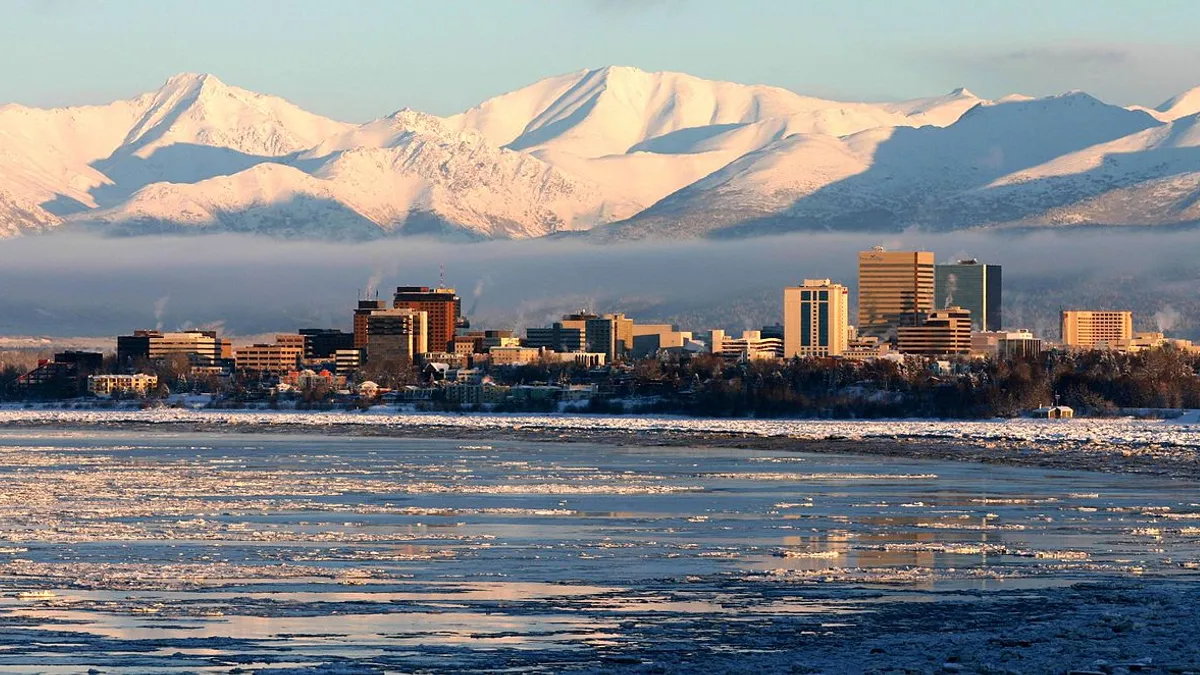The University of Alaska System is planning to merge its three separately accredited universities into a single institution to cut costs after the state's governor dealt a devastating blow to its budget in late June. But some observers warn doing so will be difficult.
"Individual campus toes are going to be stepped on; faculty members are going to bristle over the perceived erosion of their authority over certain things; (and) some support staff are probably going to have to relocate as campus services are centralized," said Dean Smith, professor emeritus at the University of Hawaii. "These troublesome issues are just going to have to be addressed later, when the financial pressure subsides."
Alaska Gov. Mike Dunleavy slashed $130 million from the system's budget earlier this summer. Along with a prior $5 million reduction approved by state lawmakers, the cuts add up to an unprecedented 41% single-year decrease in state support.
System President Jim Johnsen is drafting a plan for a new U of Alaska, and the board is scheduled to formally decide on a path forward in September. However, some worry whether the consolidation will yield the necessary cost-savings.
Distance matters
Consolidation can be an attractive option for institutions hoping to reduce administrative costs, especially when dealing with a decline in state support. Under a one-university model, U of Alaska will be able to allocate a larger share of its budget to student services and academics than it would under its current model, according to a presentation given to the board.
Fewer administrators could also speed up decision-making, said Smith, who has seen firsthand the aftermath of steep budget cuts at his own institution.
But the transition into a single university will likely be a bumpy process, he said. U of Alaska leaders have indicated that program cuts and mass layoffs are imminent. Cuts to research funding are also likely.
Program consolidation could be extensive. One plan presented to the board suggested merging 17 schools and colleges into nine. Each would be housed on one campus, the Anchorage Daily News reported, noting that if there's enough demand, some colleges could offer classes across several locations, and if not, they could move courses online.
However, closing programs and relocating employees may be more difficult for U of Alaska than for other systems. "During many mergers, the campuses are in close proximity to one another. In this instance, the campuses are hundreds of miles apart from one another," said Thomas Harnisch, director of state relations and policy analysis at the American Association of State Colleges and Universities.
'A whole lot of detailed spreadsheets'
Although the governor wants swift reductions, the desired cost savings from consolidation likely won't happen immediately because it can be expensive to merge institutions.
Johnsen has said the system won't make changes to degree programs during the fall semester. And U of Alaska's accreditor, the Northwest Commission on Colleges and Universities, is requiring the system to share a plan for how it will ensure current students can meet their educational goals.
"They'll need to provide granular data and narratives on what will be done" and its impact on students, Sonny Ramaswamy, president of the commission, wrote in an email to Education Dive. "It'll be a whole lot of detailed spreadsheets — the teach-out plans, costs, will students need to move or take online courses at the (U of Alaska) campuses or other institutions. … The details are critically important."
Moreover, consolidation may not always yield the hoped-for reduction in costs, especially in the beginning. Take the University System of Georgia, which in 2011 approved a plan to consolidate several of its 35 institutions so more money could go toward academics and student success initiatives.
Merging Georgia State University and Georgia Perimeter College only saved about $6.6 million, or less than 1% of the new university's operating budget for the 2018 fiscal year, The Chronicle of Higher Education reported.
The effort does appear to have benefited students, however. A 2018 paper found the consolidations improved first-year retention rates.
Although consolidation across higher education is increasing in the face of enrollment declines and diminished state support, sources interviewed for this story said U of Alaska's case is an outlier. For example, while Georgia had the opportunity to plan its mergers carefully, Alaska is crunched for time.
"The timetable to implement these sweeping changes is going to be real challenging," Harnisch said.



















